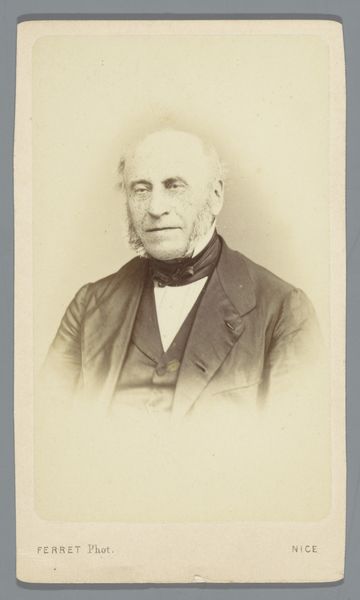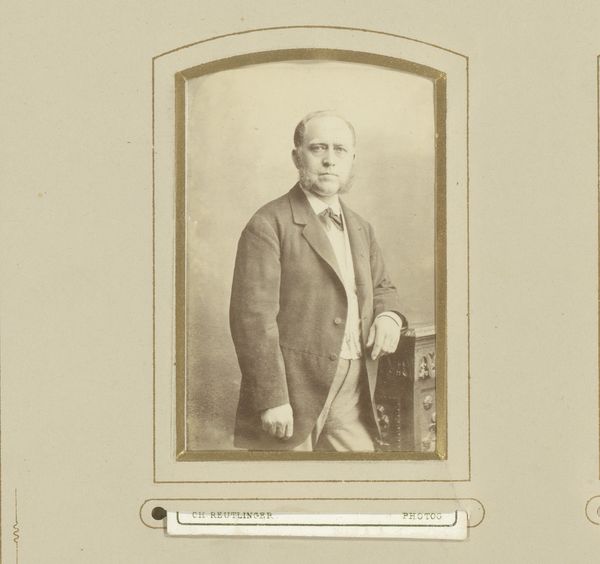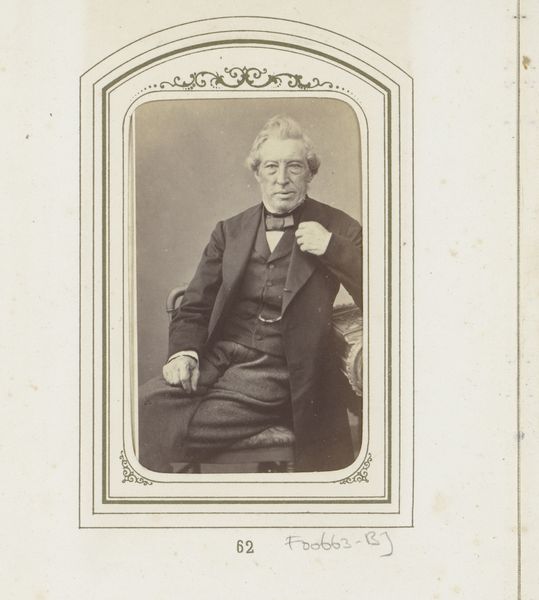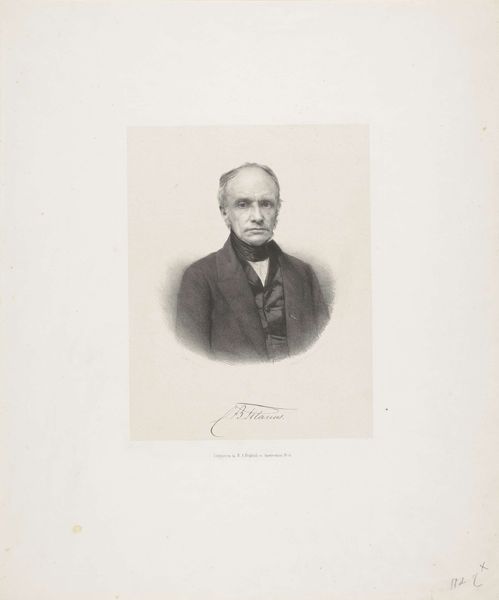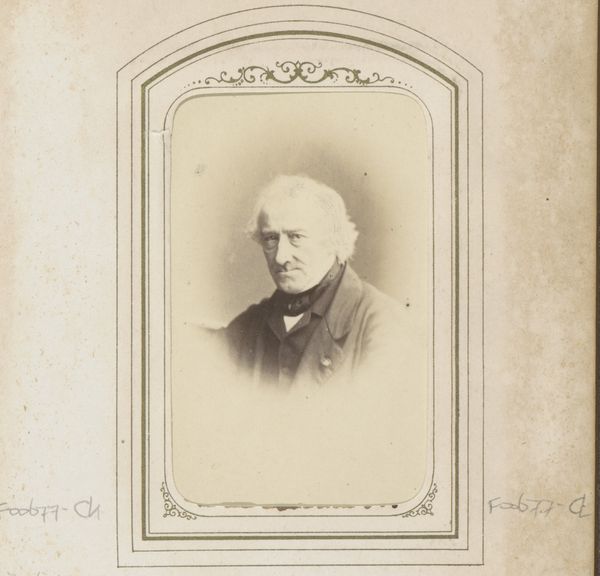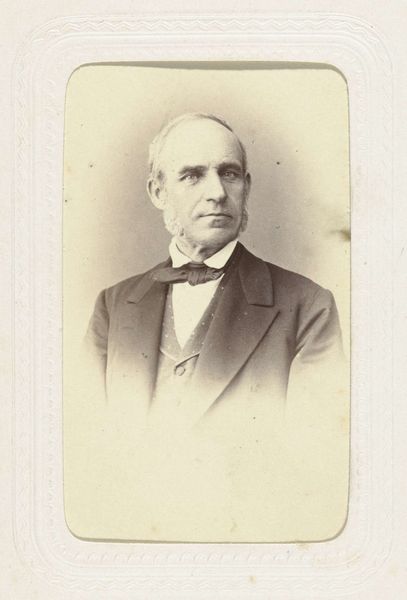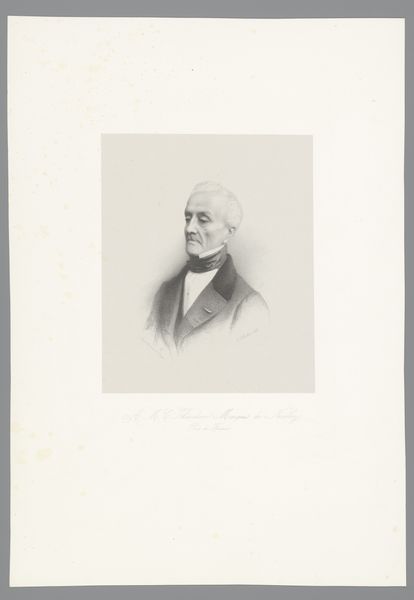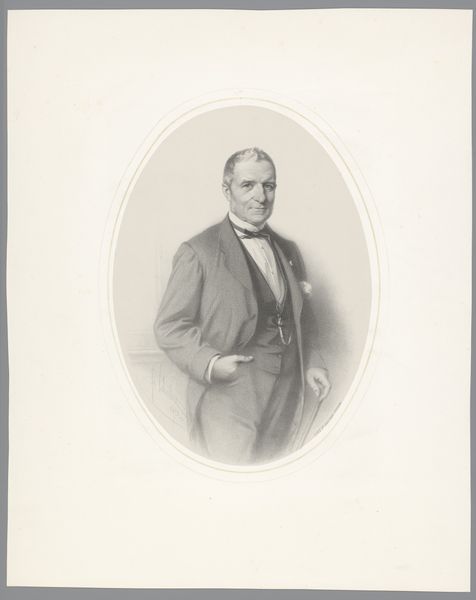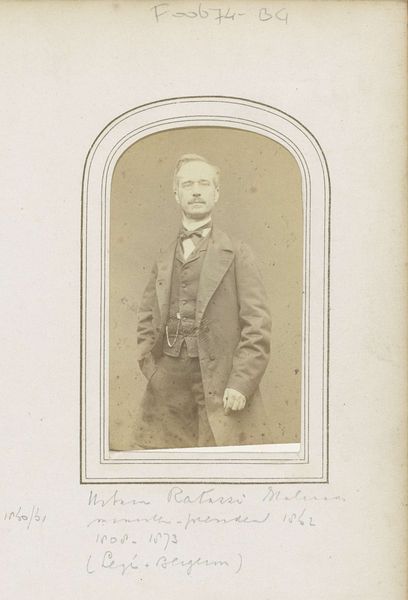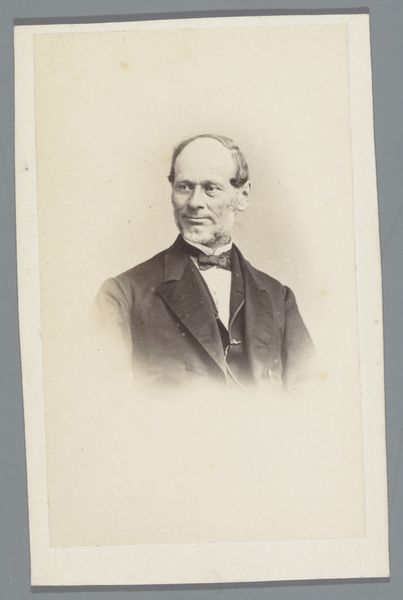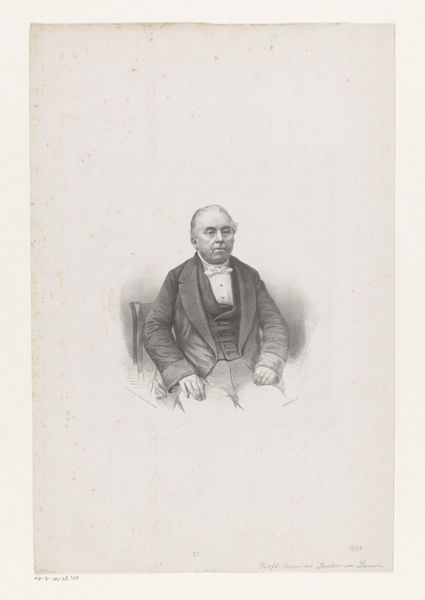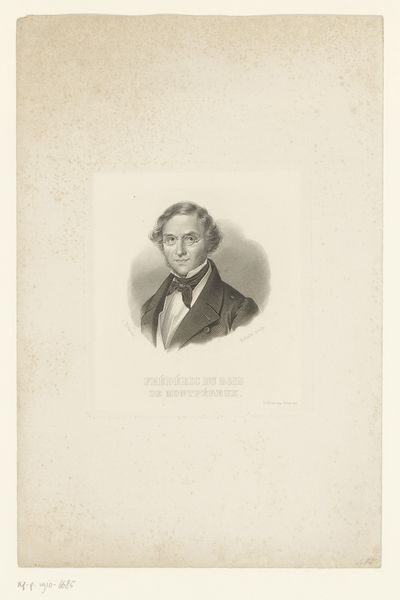
Portret van J.A.C. Rovers, hoogleraar in de faculteit Wijsbegeerte en Letteren aan de universiteit van Utrecht 1860 - 1880
0:00
0:00
photography, gelatin-silver-print
#
portrait
#
archive photography
#
photography
#
gelatin-silver-print
#
realism
Dimensions: height 105 mm, width 62 mm, height 534 mm, width 357 mm
Copyright: Rijks Museum: Open Domain
Editor: Here we have a gelatin-silver print portrait of J.A.C. Rovers, professor at the University of Utrecht, created sometime between 1860 and 1880. I find the image somewhat… reserved, dignified, but almost stiff. What catches your eye about this portrait? Curator: Well, consider its public function. These photographs emerged during a period of increased social mobility and anxieties about representation. Portraiture, previously the domain of the wealthy, became more accessible. The growing middle class desired portraits not just for family, but as markers of status, and academia was becoming increasingly professionalized. Does the professor seem comfortable? Editor: I don't know... a little uneasy perhaps? Curator: Exactly! Photography studios like A.A. Vermeulen & Co, captured and disseminated images of individuals like Rovers, helping solidify social hierarchies. Notice the staging: The pose, the clothing – they are all designed to project a specific image. What's interesting is how those codes could also be read as restrictive. How did this new technology affect what and whom got remembered? Editor: So, it’s not just about a man, but also about how photography was being used to define and preserve certain social positions. Curator: Precisely. Photography, and particularly the photographic portrait, acted as a tool in shaping historical narratives and access to it. A seemingly simple portrait like this tells us a lot about the power dynamics of the era, doesn’t it? Editor: Absolutely, seeing it in terms of access and social mobility, shifts my perspective entirely. It's a lot more complex than I initially thought.
Comments
No comments
Be the first to comment and join the conversation on the ultimate creative platform.
